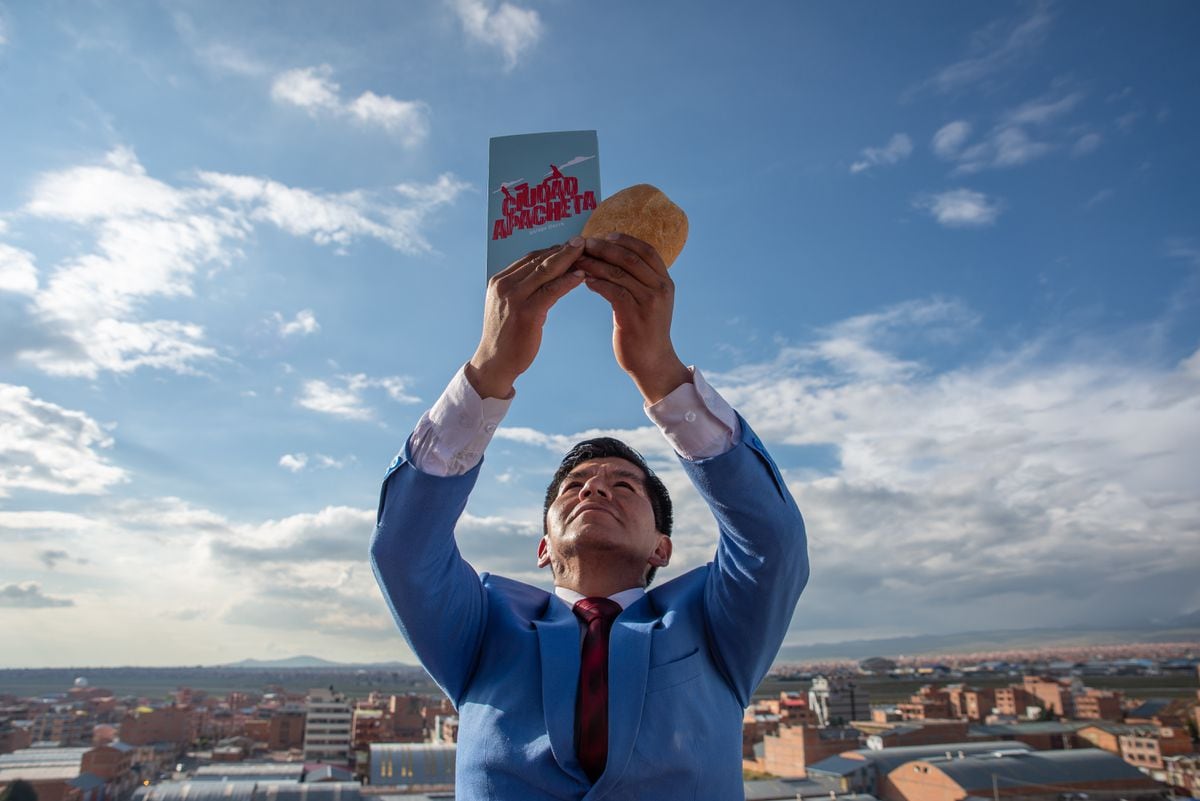On Saturdays at noon,
the divine
used to meet at the Polito bar in Mexico City, or the one in Prendes, or the Alfonso bar, or the Bellinghausen or the Estoril.
They ate, they dried the week and they went out to a canteen or a brothel.
The name gave them the cartoonist Abel Quezada, who also made cartoons of several of them.
Two of those drawings hung over the door of a famous publishing house in those years: Octavio Paz appeared crowned with olive trees and Carlos Fuentes, with a leafy revolutionary mustache.
"In the 1950s, those gatherings were only used to criticize each other", writes the essayist Malva Flores in
Estrella de dos punta
, his new book, in which he traces the encounters and misunderstandings of the poet and the novelist.
After 10 years of research, Flores assures in an interview with EL PAÍS before the presentation this Friday of his new work: "Criticism is what brought them together and then separated them."
Paz and Fuentes met in April 1950 in Paris.
The poet was 35 years old and the narrator, 21. Fuentes had already read
The Labyrinth of Solitude
and came "possessed of a previous admiration," as he himself said.
They became friends immediately, exchanged hundreds of letters over three decades, but died estranged, practically without speaking.
"Understanding what had happened in this friendship is fundamental to understanding what happened in Mexican culture in the last half of the 20th century," says Flores (Mexico City, 59 years old), who has received the 2020 Mazatlán Prize for Literature for this work.
“Everyone in Mexico knows that they were close friends and then they stopped being so,” says the writer, “it was always said that they had separated due to an essay published in Paz's magazine, but I write 600 pages to show that this is not It was like this".
To narrate
Two-pointed star.
Octavio Paz and Carlos Fuentes: chronicle of a friendship
(Ariel, 2020), Flores has investigated the correspondence that the authors exchanged between 1956 and 1982 and that the American University of Princeton released in 2014. Some letters full of intimacy, confessions, admiration and disagreements that show the political, social and cultural climate of those years and expose the backstage of a generation of intellectuals that marked the passing of a century.
The text is also constructed from telegrams, newspaper archives and letters from the authors with other thinkers and artists.
There appear Milan Kundera or Albert Camus, Julio Cortázar or Gabriel García Márquez, Luis Buñuel, Elena Poniatowska, Carlos Monsiváis or Rita Macedo.
Elena Garro, a novelist, playwright and Paz's ex-wife, also appears in the investigation.
"Everyone already knows that Elena Garro played an important role denounced to the intellectuals," Flores stands, "my personal opinion is that I was very afraid and that fear leads you to do silly things."
These were troubled times.
In 1968, almost 10 years had passed since the triumph of the Cuban revolution;
Czechoslovakia began a period of liberalization that would end with the entry of Soviet tanks into the city of Prague and Paris was experiencing its French May.
That year, Paz was working for the Mexican foreign services in India and Fuentes was in London.
It is the time when their friendship becomes closer, says Flores in his book.
"They are very excited because they see in these riots the possibility that their dreams of rebellion against the
status quo
or the government will be fulfilled," explains the author.
In Mexico, Gustavo Díaz Ordaz, of the Institutional Revolutionary Party (PRI), ruled when on October 2 of that year a peaceful student protest was shot to silence.
The Tlatelolco massacre "surprises them and unites them a lot," says the author, "it gives them great anguish and they write to each other practically every day with desolation."
In those letters they wonder if they should return to Mexico.
"To be actors or artists?", Writes Paz.
"What you say or do will be final for me ... for so many Mexicans who believe in you", responds the author of
The most transparent region
.
What follows is known: Paz resigns from his post as a diplomat and they meet in Barcelona.
Fuentes returned to Mexico a few months later and Paz returned when the Diaz Ordaz regime ended.
Their affinities in those years of close ties were literary as well as political.
They shared an obsession that they spoke of constantly in their correspondence: to start a “Hispanic magazine, in the good sense of that unfortunate word, but open to the world,” Paz wrote.
But that joint publication never came to fruition.
The poet, on the other hand, learned from the French newspaper
Le Monde
that Fuentes together with Julio Cortázar, José Donoso, Gabriel García Márquez, Juan Goytisolo and Mario Vargas Llosa had decided to create a magazine that would be published quarterly from Paris.
"This hurt Paz a lot," says Flores, who places the beginning of the end of that friendship there.
“He says it clearly in a letter to Fuentes.
It is a hard and sad letter ”, explains the researcher.
It was 1971. The
Libre
magazine
lasted only that year.
The poet created
Plural
in Mexico
, where he also had a Fuentes column.
But the friendship was already unraveling.
The endorsement of Fuentes, who had been appointed ambassador to France in 1974, to President Luis Echevarría and his silence when pro-Sandinista protesters burned a Peace Sphinx on the Paseo de la Reforma for calling for elections in Nicaragua were marking the relationship.
The distances between the two were accentuated.
"During the long period of friendship there were several moments of rupture that the history of Mexican literature has wanted to forget and has recorded in 1988," Flores writes in the book.
That year
, a review by Enrique Krauze entitled
La comedia mexicana de Carlos Fuentes
appeared in the magazine then directed by the poet,
Vuelta
, but that, for the researcher, was "the last of the disagreements."
The friendship between the two, Flores believes, laid "the foundations of literary, political and social criticism as something mandatory to understand freedom."
"That base today is being diluted," he laments.
"We no longer have two writers the size of Fuentes and Paz, this type of writer who brought together many other writers, but also an intellectual movement that went further from Mexico."
Flores exposes a “very poetic hypothesis” to explain it: “The commodification of art has given art and literature a towering shot.
We are very concerned about showing up and we quickly disappear.
There is no longer a Republic of Letters.
There are people who live apart even though we are all on Twitter ”.
Fuentes won the Cervantes Prize in 1987 and Paz, the Nobel Prize for Literature in 1990. There are no letters from those years in the Princeton collection.
The author of
Aura
did not call to offer his condolences when the poet died in 1998, but left a text,
My friend Octavio Paz
: “We did not agree on various political issues, but we prided ourselves on deferring without fighting, on proving our friendship, strong and deep, against all differences.
We gave, we wanted to give, a proof of respectful coexistence between different conceptions of life and society.
We almost made it ”.
Subscribe here
to the
newsletter
of EL PAÍS México and receive all the informative keys of the current situation of this country

/cloudfront-eu-central-1.images.arcpublishing.com/prisa/RGK6L3N47JBGNOVIXZYBUZUS7E.jpg)




/cloudfront-eu-central-1.images.arcpublishing.com/prisa/ZTYVRPXY7NGDJKLEOZB432EXRI.JPG)


